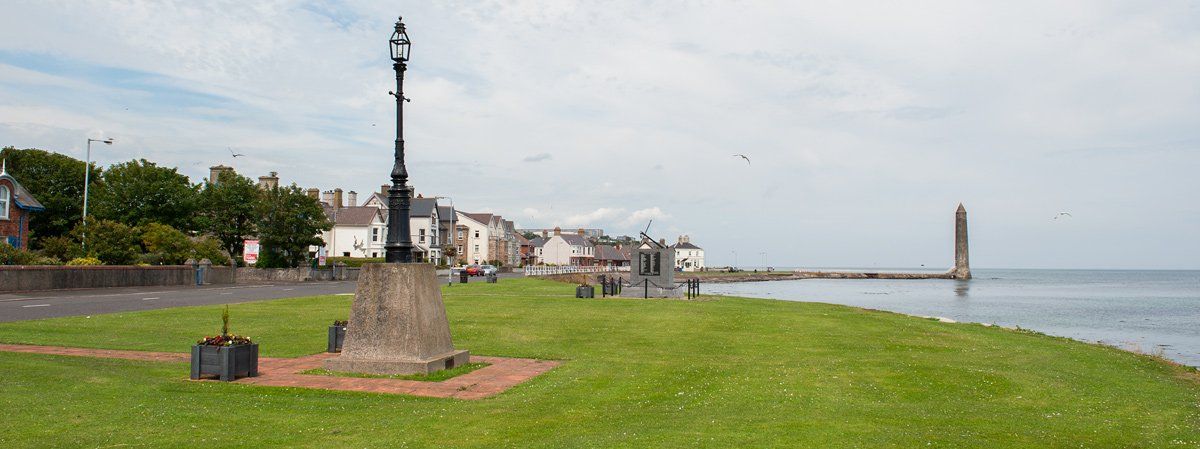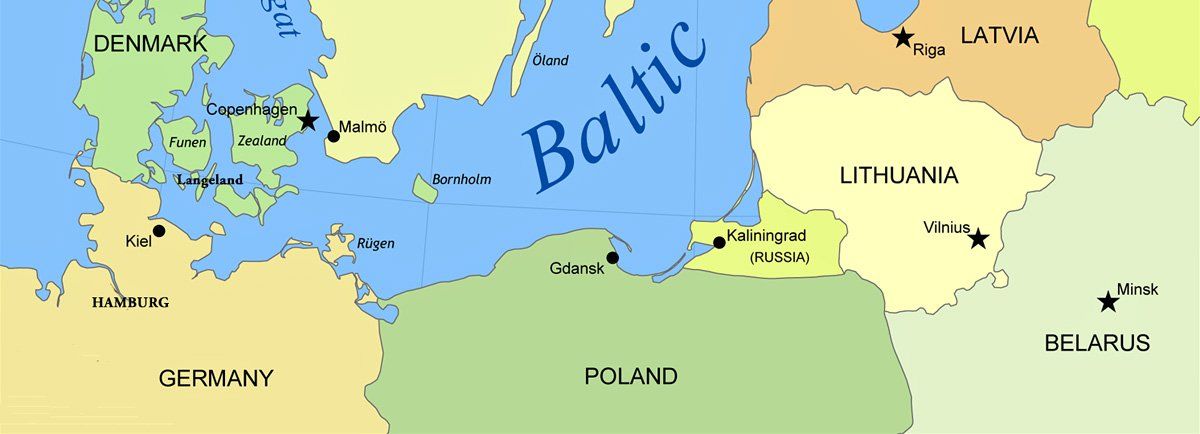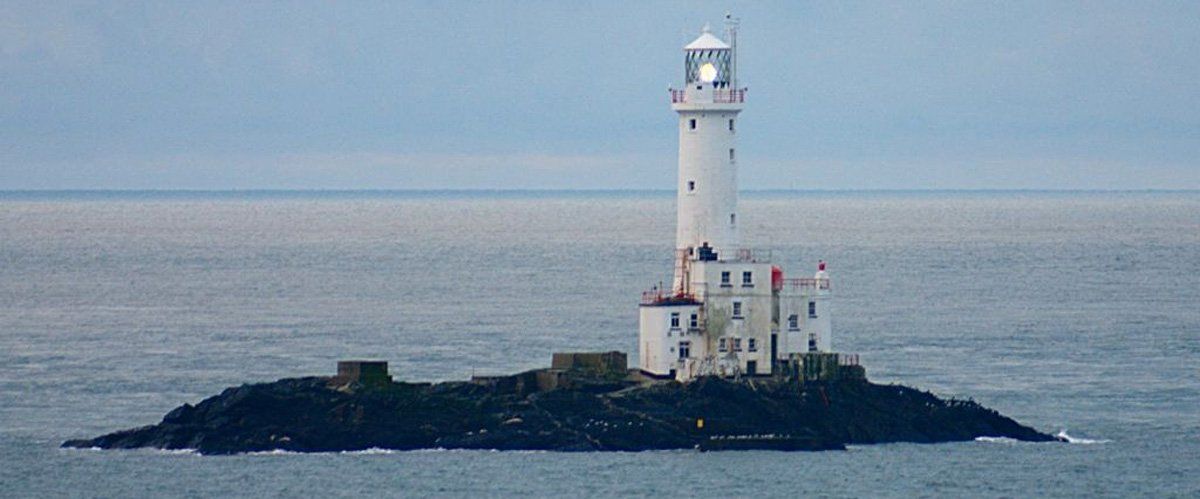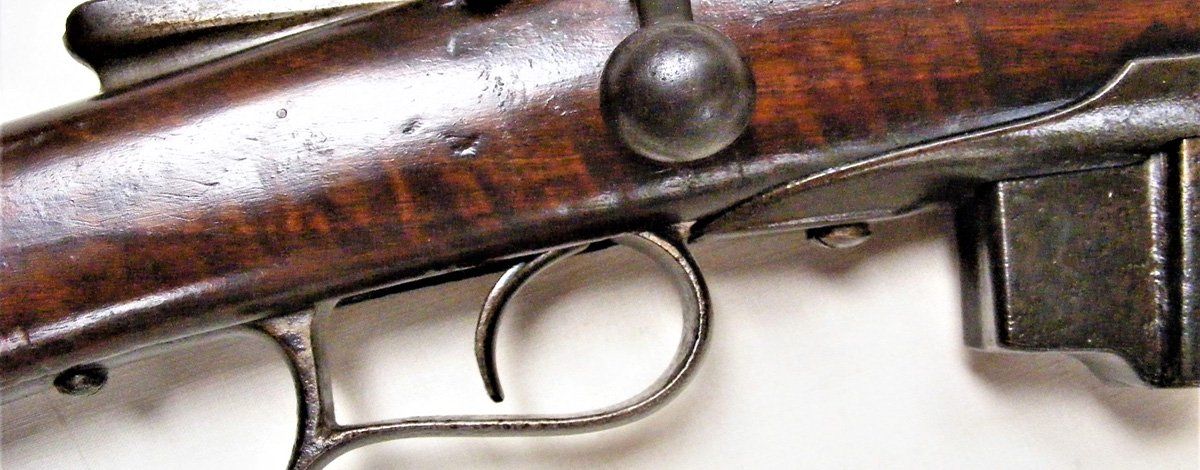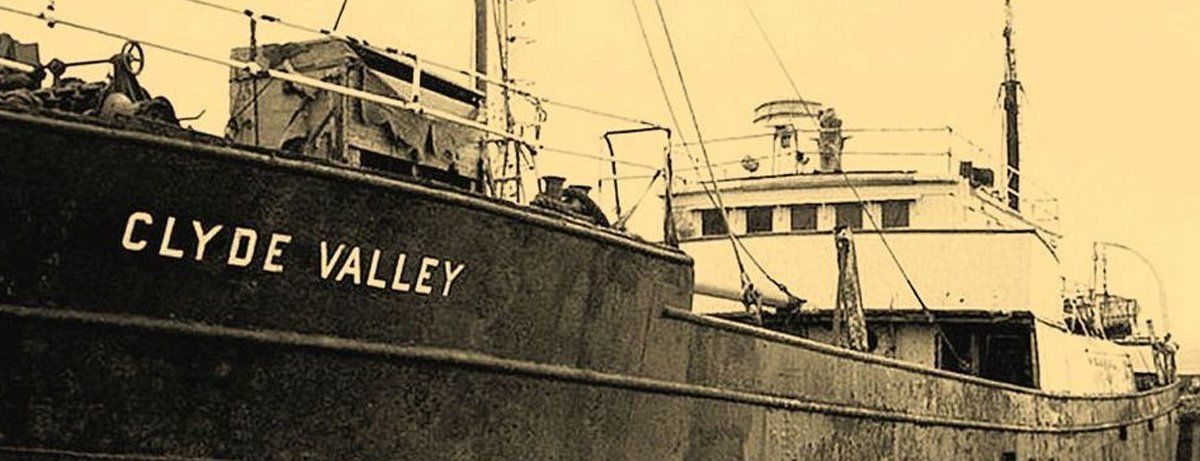Clyde Valley
The memorial to the Clyde Valley features the lamp which guided the Clyde Valley (alias Mountjoy II) into Larne harbour, it marks an interesting event in Irish history set during the Home Rule period. The event came about in opposition to the proposal by the British Government to give self-government to Ireland within the United Kingdom and Ireland. The Clyde Valley was part of a major gun-running operation in 1914 on behalf of the Ulster Unionist Council to arm the Ulster Volunteer Force in opposition to the Third Home Rule bill introduced in 1912 by Prime Minister Asquith. After several attempts to smuggle arms into Ireland, Scotland and England which were thwarted by custom officials the ‘Clyde Valley ‘ plan was organised and carried out.
A Major Crawford, an officer in the British Army and Ulster loyalist made contact with a German arms dealer in Hamburg and purchased 11,000 Austrian Mannikicher rifles, 9,000 ex-German Army Mausers and 4,600 Italian Vetterli-Vetali rifles along with 5 million rounds of ammunition. These were shipped by the Keil canal to Langeland and then transferred to the S.S. Fanny a 216-ton chartered ship. The operation managed to make their getaway from the Danish customs who were about to search the ship, they set sail in a gale heading for the south of Ireland. To lessen the chances of being intercepted by British customs or the Royal Navy, Crawford bought the Clyde Valley in Glasgow and it sailed for the south of Ireland too.
The two ships rendezvous off Tusker Rock, County Wexford where the arms were transferred from the S.S. Fanny to the Clyde Valley which set sail for Larne harbour, en route the crew painted a new name for the ship ‘Mountjoy II’ onto a large piece of canvas and glued it over the name of the S.S. Clyde Valley. This was a nod to the story of the Mountjoy which sailed up the Foyle and broke through the boom and relieved Derry during the siege in 1689. The UVF Motor Corp were organised for the night of the 25/26th for secret duty, nobody was told of the arms arriving and only 12 people in total knew about the gun-smuggling operation. Pickets and cordons were set up along the roads around Larne and leading to Belfast, telephone lines were also cut to Larne.
Another ship was charted to act as a decoy in Belfast, the SS Balmerino suspiciously sailed into Belfast lough to attract the eyes of the customs officers, a large truck was sent to the dock to wait for its arrival, the customs and officials focused on the Balmerino while the Clyde Valley arrived in Larne, unloaded part of the shipment onto two motor vessels which headed to Donaghadee for distribution by vehicles, The ship then sailed to Bangor to unload the remainder. By 8.30 am the 'Mountjoy II' had set sail for Rosslare where Major Crawford disembarked, en route the canvas was removed to reveal the true name of the ship. The Clyde Valley then sailed to the Baltic and met up with the SS Fanny. This ship was disposed of in Hamburg and the crew brought back to Ireland aboard the Clyde Valley.
Stepping back from the political aspect, it was an amazingly clinical operation and for its time perfectly executed like clockwork. The Clyde Valley was built by MacIlwaine, Lewis and Company Ltd in Belfast and launched in 1886 as the S.S. Balniel for the Wigan Coal and Iron Company. The ship was later sold to the Clydeside Steamship Company in Glasgow and in 1910 renamed S.S. Londoner, and in 1912 renamed again as S.S. Clyde Valley. In 1914 she was sold to Hugh Crawford and acquired in April of the same year by Major Frederick Crawford on behalf of the Ulster Volunteers. After a colourful life both Germany, England and Canada she was bought by Samuel Campbell of Whitehead in 1969 with the intention to preserve her, the project never came to fruition and she was scrapped in 1974 with an amazing history spanning nearly ninety years.

